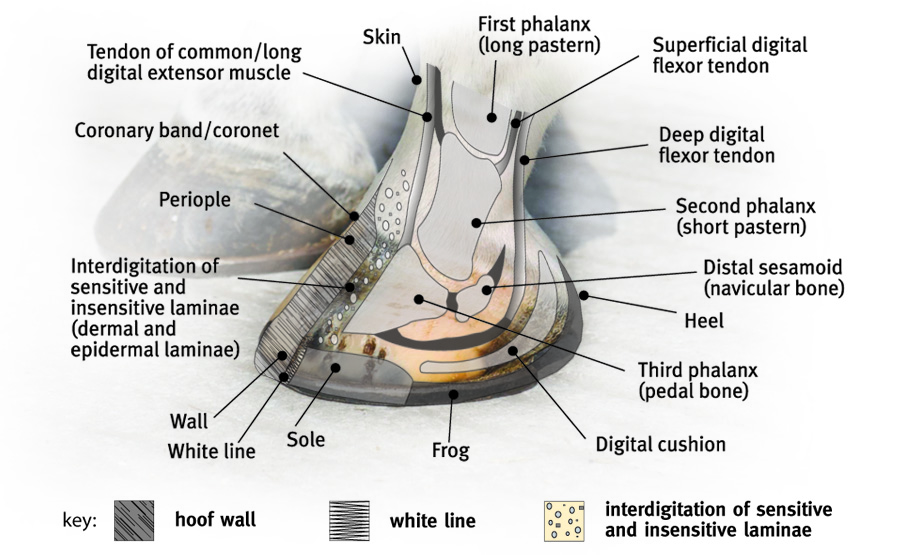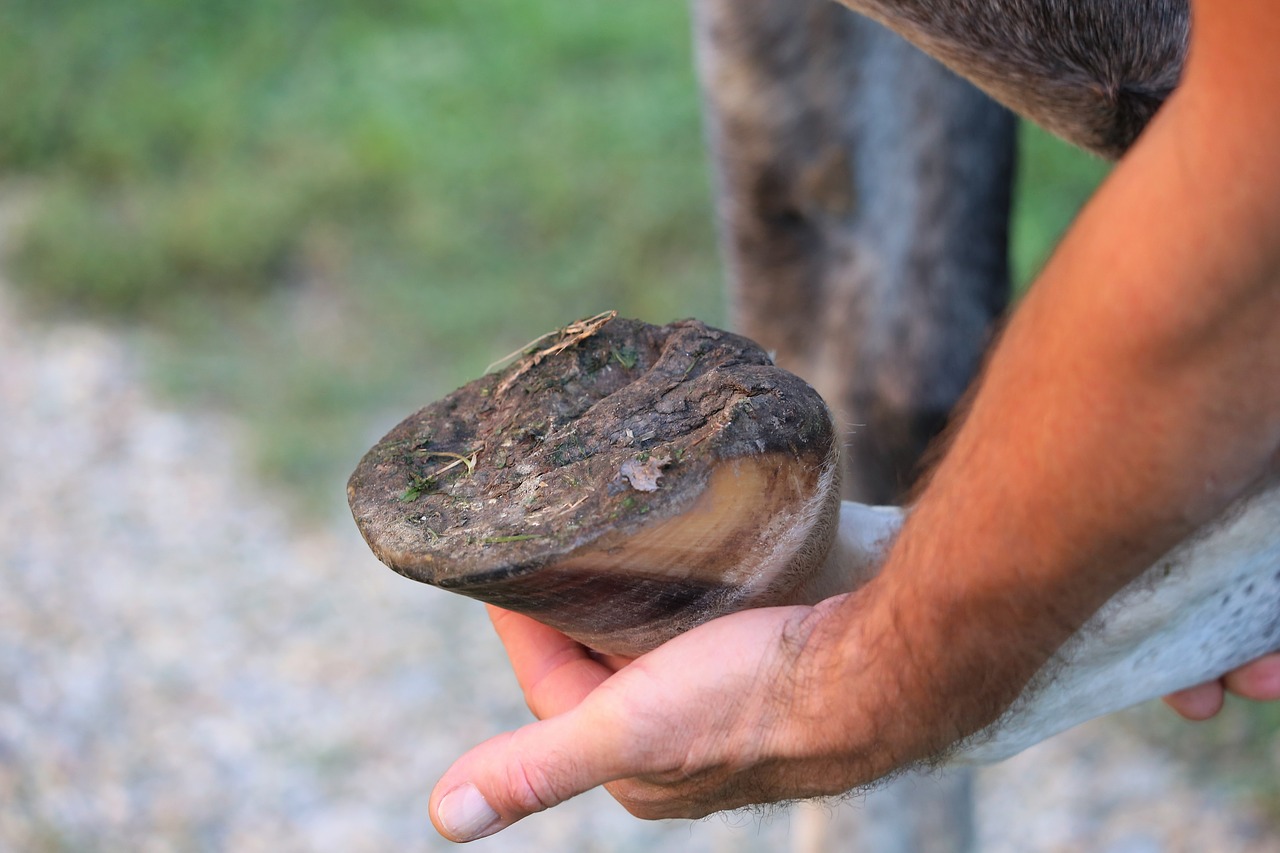Last week I had to deal with a common cause for sudden and otherwise unprompted lameness with my buddy Mr. Sure Prize: an abscess in the hoof.
But for new horse owners and beginners, what is an abscess? What does this mean? How is it treated? How long will it take to resolve? Can I prevent them?
All excellent questions that we can dig into great detail on, but I’ll keep this as straightforward and easy to understand as possible.
Let me first just set the stage for us.
After some turnout and a light ride around the arena on one day, I went out to find my horse barely walking the next day. Fearing the worst I started to check him over for any obvious signs of trauma or swelling and to my surprise, I couldn’t find anything that looked like a problem.
And yet here was my retired racehorse acting like he can barely walk. Fine yesterday, broken today. Such is the life of owning a horse!
I turned to Lisa, my more experienced better half, who took one deep breath and let out a single word. “Abscess.” And with a little treatment and kissing of boo boos, after a whopping 72 hours my boy was back to trotting around as if nothing had ever happened.
What is a hoof abscess?
An abscess will often cause sudden, severe and otherwise unprompted lameness due to a localized bacterial infection in the sensitive parts of the hoof known as the laminae, a layer of tissue that bonds the hoof capsule to the coffin bone. Essentially this causes pus to accumulate within the hoof and you can sometimes see evidence of an abscess in cracks of the horse’s sole or in spots where the hoof or white line might be compromised.

A hoof abscess is essentially a pimple in a horse’s hoof that needs to pop and force the infection out either through the sole of the foot or through the top of the coronary band. Why only through the top or bottom? While abscesses through the side of hoof wall are rare, in most cases the hoof wall is designed to be as tough as possible, meaning it doesn’t expand with the influx of pus due to an infection. This lack of expansion by the hoof wall makes it painful to walk on, causing the lameness often associated with an abscess, and the strength of the wall typically forces the infection out through either the top of bottom of the hoof.
You can see in this video by SmartPak how debilitating an abscess can be and the damage they can leave behind. While some hoof abscesses may be more severe than others, the expulsion of the bacteria leaves behind a hole and compromised area that’s often vulnerable to new infection.
Causes for an equine abscess
There are a number of possible reasons for a horse’s hoof to abscess, but remember what this is at its core – a bacterial infection within the hoof. To name a few causes of abscesses in the hoof, they include scenarios like:
- Stepping on a rock or some other hard object that might get stuck or work its way into the hoof
- A reaction to bruising, again maybe caused by stepping on something hard or hitting something a little too fast
- Shoeing nails going deep into the foot and causing an infection
- Laminitis or Navicular Disease
- Extremely wet and muddy conditions
In my particular case, I can think of a two factors that I’m dealing with right now in the Northeast: (1) a particularly wet and muddy winter season that’s caused the ground to go from soft and wet to frozen and hard on many occasions, and (2) the boy also had a fair amount of turnout time in our back arena and that could have also played a role if he were running like crazy and got a rock stuck up somewhere it shouldn’t have been.
Diagnosing an Abscess in a hoof
Abscesses in the foot usually take a few days to develop and quite often there will be a sudden change and severe lameness after the pressure within the hoof has built up and become painful.
The first thing you’ll want to do is identify which leg or hoof is being favored and rule out any other more serious injuries by checking for heat and/or swelling in joints above the hoof. Typically abscesses will present with sudden lameness, possibly with heat around the hoof wall or coronary band, along with an unwillingness to put weight on one foot, or putting weight first on the toe and then on the heel. This is typical “ouchy” behavior that points to the source of pain as being within the hoof itself.
Next you’ll need to clean off the sole of the foot and look for any compromised areas in the white line or bottom of the hoof. This will come in the form of dark spots or cracks that can vary in size and shape. You can refer to the SmartPark video above for some examples if you’re curious.
If there don’t appear to any obvious blemishes, you can also use a pair of hoof testers to check for sensitivity in different regions of the foot to give you an idea where the infection is localized.
When you aren’t able to determine a response from sensitivity in the hoof and your horse is still severely lame, it’s time to call the vet for a more thorough examination so you can rule out any potentially more severe diagnosis including laminitis or fractures.
Treatment for Hoof Abscesses
The best way to treat an abscess is to relieve the pressure by getting it to drain or vent through either the coronary band or sole of the hoof. Remember the pimple analogy? We’re trying to pop it.
Common treatments for hoof abscesses include soaking the foot with warm water and Epsom salts. This can be done with a bucket, with a soaking boot, or by placing the salts and a poultice pad in any working boots that fit and can be left on for 24-48 hours at a time. The salt and warm water help soften the hoof, allowing for the infection to be pushed out. Most routine abscesses do not require any antibiotics.
However in some cases abscesses can be so severe that you may need to call a veterinarian. A vet will be able to help potentially drain an abscess or perform a more thorough examination if it appears that the infection has spread to other parts of the hoof.
With soaking and supervision an abscess can take anywhere from just a few days to a week or more to work its way out. You’ll want to pay attention to where the abscess drains and do your best to keep this area clean and dry to prevent reinfection.
Can I prevent abscesses in the future?
The honest answer? Not really. Is having an abscess once an indication that your horse will be prone to them in the future? Probably not.
Remember, abscesses are localized infections within the hoof wall so to prevent an infection you can do a few things:
- Regularly clean out your horses hooves
- Get regular care from a farrier so that changes in sole thickness are detected and addressed
- Do your best to avoid extremely wet or muddy conditions, but sometimes this is just plain unavoidable, especially during seasonal weather changes.
If you live in an area that’s prone to extremely wet or extremely dry conditions, then chances are your horse will be at a higher risk of developing an abscess, much in the same way that conformational issues can later lead to injuries as a result.
The long story short? Good hoof care can go a long ways in terms of preventing an abscess but it’s absolutely not a fail safe. Sometimes things just happen and we have to treat them.

